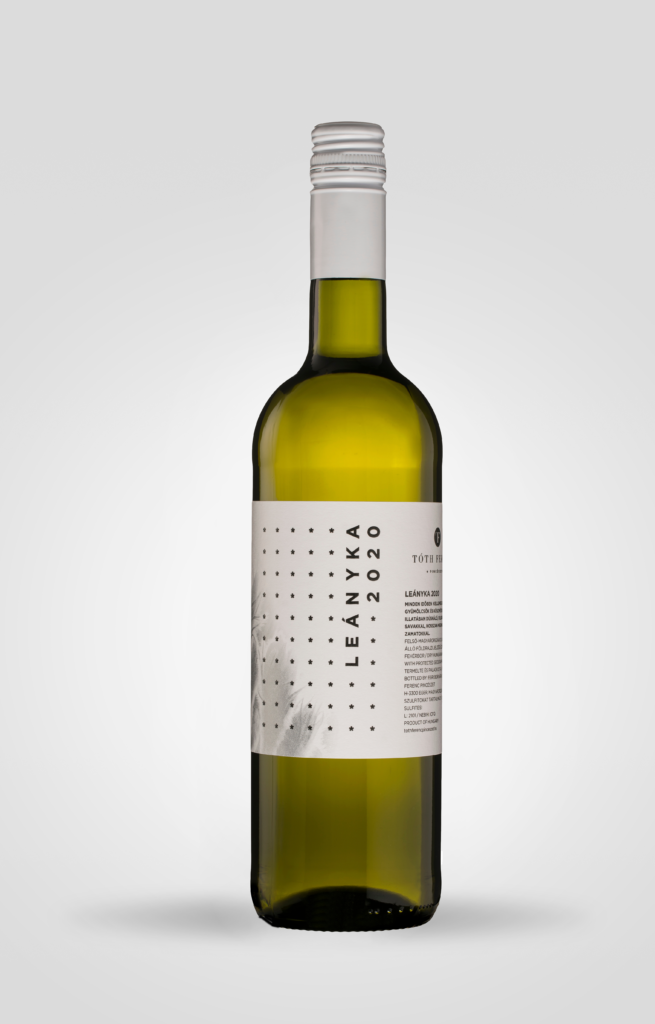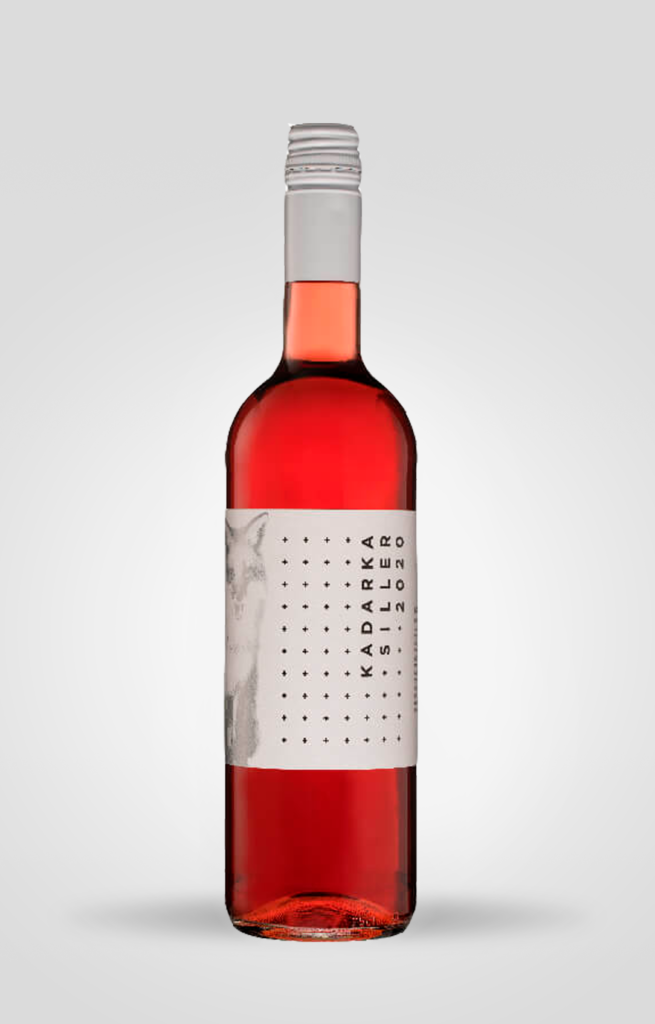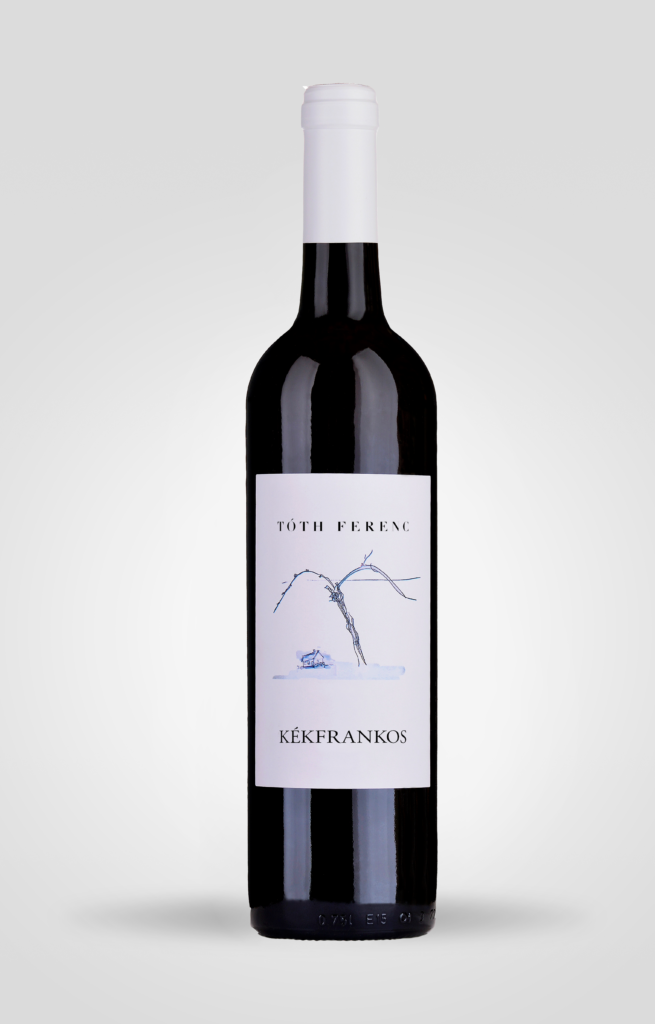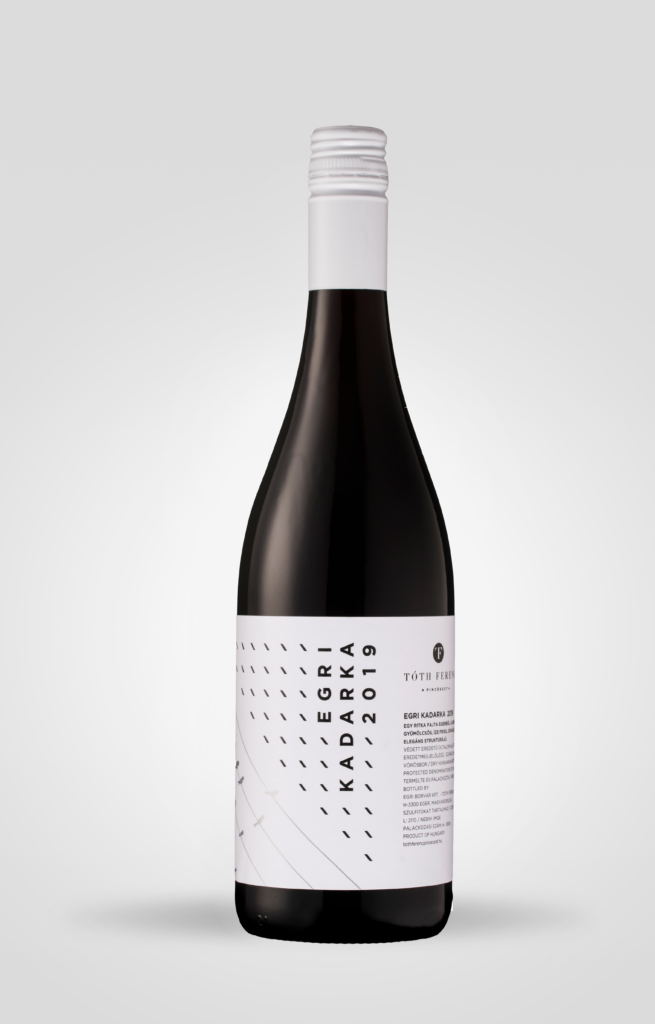Tóth Ferenc Winery
Eger Region
Ferenc Tóth—usually referred to as Feri bácsi, or “Uncle Frank”—was born and raised in Eger, and now has nearly seven decades of harvests under his belt. Tóth made his first Bikavér (Bull’s Blood) at the age of 16. But under the Communist regime, he wasn’t allowed to be a winemaker. Instead he worked in construction, but always made wine on the side. In 1983 Tóth and his wife, Marika, were able to acquire a 1.5 hectare vineyard, and started their little family winery. The Tóth family now has 30 hectares of vineyards on some of Eger’s best slopes, and the next generation joined the winery—their daughter, Katalin, and her husband. Ferenc Tóth is a big advocate of the Kadarka grape. He was named “Winemaker of the Year in Eger 2012,” and the family always aims to keep a balance between preserving the old-school Eger styles and traditions, while using the most modern technology, to make outstanding wines.

Leányka, 2020
Leányka is an old Hungarian variety which originated in Transylvania, which was once part of Austro-Hungary and is now in Romania. The name translates as “maiden” or “little girl,” and it is thought that the name was given during Hungary’s War of Independence (1848-1849) when villagers were unable to pay priests for services such as baptisms or weddings. So, when a child was baptized, the priests were paid in vines which were planted into the Church’s vineyards. Many girls were born, as was a new grape variety, which the priests decided to name after the child whose parents had planted the most vines in her honor. Naturally, this led to some conflict, so to please everyone, they chose the name ’Leányka’ for the new grape. Leányka grows in a few Hungarian regions (though it is not as popular as it once was), but does best in Eger, where the limestone soil enables it to ripen fully and retain acidity. This Leányka has an array of floral and herbal aromas (lemongrass, cannabis, mint, grass) and fruity ones (citrus, pear, quince, gooseberry), as well as a bit of flintiness. It is bone dry on the palate, with zesty lemon, pear, and green apple flavors—the same herbal notes that we get on the nose. There’s a lingering flavor of green apple jolly ranchers (which reminds us of childhood). If you like Vinho Verde, you’ll also like this wine. We love it with seafood (raw or grilled, and especially oysters). It’s also lovely with sushi, or on the opposite spectrum, Wiener schnitzel. If you’re going the Hungarian route, this wine pairs nicely with lecsó (stewed peppers and tomatoes) or fried chicken and potato salad.
Only Available in the Eger 6-Pack

Kadarka Siller, 2021
This wine makes a statement with its outstanding color. It’s a vibrant hot pink—so pretty that it’s hard to take your eyes off of—like the color of cherry juice. The color is bolder than your standard rosé wine. That’s because this is not a rosé, it’s a Siller! Siller (pronounced Shiller) is a traditional wine style brought to Hungary by Swabian winemakers, who mainly settled in the southern part of the country. It’s neither a rosé, nor a red wine, but something in between. Lighter than a red, but darker than a rosé. In the past, Siller was made by blending red and white grapes, but today it’s only made from red grapes. It differs from a rosé in that skin contact during fermentation happens for a longer time, but not long enough to get enough color to make it a red wine. This wine is 100 percent Kadarka, from a small vineyard (less than a hectare) with 19-year-old vines. On the nose, it is all cherries, strawberries, and raspberries. And on the palate, this wine is dry and tastes of watermelon (and sour watermelon candy), strawberries, red currants, cherries, and grapefruit. A chilled glass of this Siller is perfect on a warm day with a picnic lunch, or in the backyard with dinner from the grill. But don’t fret if the wine warms up as you drink it! Like any good wine, the flavors really emerge as the chilled edge goes away. Don’t let the color of this wine fool you–though it’s fruity and refreshing like a rosé, it also has more tannins than its color suggests, and a nice long finish. We love this Siller with grilled shrimp, quiche, and pizza. Or drink it with Hungarian dishes such as eggplant spread (padlizsánkrém), chilled fruit soup, or körözött (Liptauer).

Kékfrankos, 2017
Kékfrankos is a variety known by many names across Central Europe, best known as Blaufränkisch in neighboring Austria. It is the most planted red grape variety in Hungary, with more than 7,000 hectares (Austria has just 3,000 hectares). Kékfrankos is the classic representation of Hungary, and is considered one of the country’s best wine varieties. It’s an integral component of the Egri Bikavér blend, and it also really expresses terroir. This Kékfrankos is from the cooler climate Eger region. It’s a crowd-pleasing medium-bodied wine that shows the aromas and character of a slightly aged Kékfrankos—yet it’s really fresh for a five-year old wine. It has a nose full of cherry jam, raspberries, cherry syrup, plum jam, cherry strudel, some spices, and truffles. All of this deliciousness continues on the palate, along with a nice long chocolatey cherry finish. Cherry is really dominant all around. Grapes for this Kékfrankos were harvested by hand, macerated for 30 days, and fermented on the skins for two weeks. It was then aged in different types of barrels (including oak) for two years. This is an elegant and balanced Kékfrankos, which is very easy to drink. It goes great with game and roasted pheasant, or pasta with a salty sauce (like one with olives or capers in it). Or, if you want to serve it with something Hungarian, try it with roasted duck with tart cherry sauce.

Egri Kadarka, 2019
Winemaker Ferenc Tóth was named Kadarka Ambassador in 2012 for his mastery and dedication to this grape. The Kadarka grape didn’t originate in Hungary. Its origins are somewhat hazy, but it likely began life in the Balkan-Pannonian region. It later ended up in Hungary when Serbs fleeing the Turks migrated northwards bringing their Kadarka vines with them. The Hungarians adopted Kadarka as their own, and by the 19th century nearly 60 percent of vineyards were planted with it. It was the dominant variety in the Eger region in the first half of the 1900s, until a significant amount of the Kadarka vines were removed in the latter half of the 20th century. Now, winemakers are once again looking back to Kadarka. An increasing number of single varietal wines are produced from it, and it plays a role in the Bull’s Blood blend. But beloved Kadarka is troublesome in the vineyard. It ripens late and unevenly; it’s thin-skinned, and susceptible to rot and frost; and it requires more attention. Kadarka can range from being a light and elegant red-fruit-driven wine, to a more structured wine showing darker fruit. This one shows a bit of both sides of Kadarka. It was fermented in stainless steel, and aged in 5,500 liter Hungarian oak barrels for 18 months. The wine is very light in color, nearly translucent. It has delicate aromas of red currants, cherries, and pomegranate, and the barrel-aging adds some earthiness and mushroom character. This is a delicate wine with a light body, but vibrant spiciness, umami, and fruit flavors. Kadarka’s smooth tannins and racy acidity make it a classic companion to Hungarian paprika-flavored dishes—such as fisherman’s soup (Halászlé), stew (pörkölt), stuffed cabbage or peppers (töltött paprika or töltött káposzta). It’s also great with creamy pasta dishes, mushroom dishes, or flank steak.
